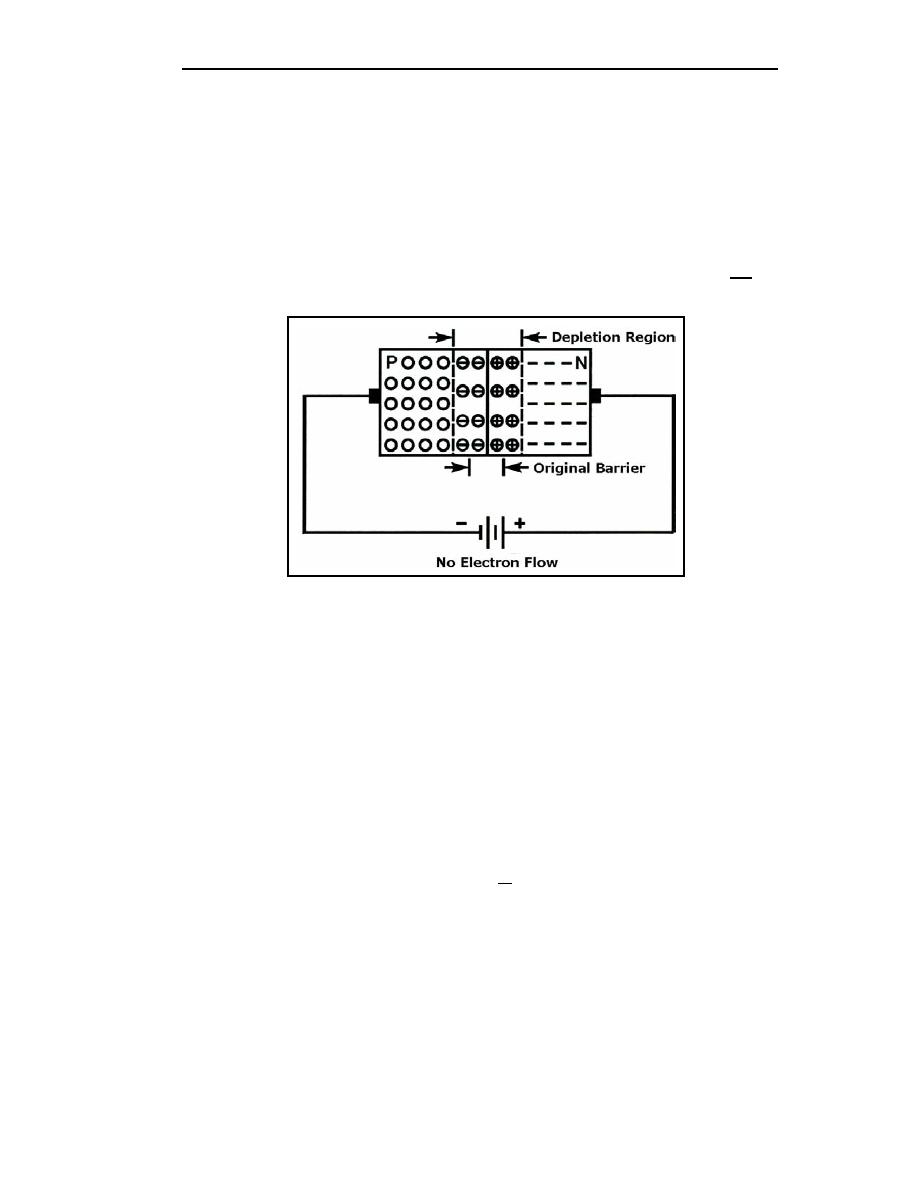
TC 9-62
minority current carriers. There are minority current carriers in both regions (holes in the
N-type material and electrons in the P-type material). With reverse bias, the electrons in the
P-type material are repelled toward the junction by the negative terminal of the battery. As
the electrons move across the junction, it will neutralize a positive ion in the N-type
material. Likewise, the holes in the N-type material will be repelled by the positive
terminal of the battery toward the junction. As the hole crosses the junction, it will
neutralize a negative ion in the P-type material. This movement of minority carriers is
called MINORITY CURRENT FLOW, because the holes and electrons involved come
from the electron-hole pairs that are generated in the crystal lattice structure, and not from
the addition of impurity atoms.
Figure 1-19. Reverse-Biased PN Junction
1-75. When a PN junction is reverse biased, there will be no current flow due to majority
carriers but a very small amount of current due to minority carriers crossing the junction.
However, at normal operating temperatures this small current may be neglected.
1-76. The most important point to remember about the PN junction diode is its ability to
offer very little resistance to current flow in the forward-bias direction but maximum
resistance to current flow when reverse biased. A good way to illustrate this point is by
plotting a graph of the applied voltage versus the measured current. Figure 1-20 shows a
plot of this vo1tage-current relationship (characteristic curve) for a typical PN junction
1-77. We can use Ohm's law to determine the resistance from the curve (see
Figure 1-20). Ohm's law is as follows:
E
R =
I
For example at point A, the forward-bias voltage is 1 volt and the forward-bias current is
5 mA. This represents 200 ohms of resistance (1 volt/5 mA = 200 ohms). However, at
point B, the voltage is 3 volts and the current is 50 milliamperes. This results in 60 ohms of
resistance for the diode. Notice that when the forward-bias voltage was tripled (1 volt to 3
volts), the current increased ten times (5 mA to 50 mA). At the same time the forward-bias
voltage
increased,
the
resistance
decreased
from
200
ohms
to
60 ohms. Therefore, when forward bias increases, the junction barrier gets smaller and its
resistance to current flow decreases. However, the diode conducts very little when reverse
1-22
TC 9-62
23 June 2005



 Previous Page
Previous Page
